
Monster Hunter Wilds Review
It's difficult not to admire just how much Monster Hunter Wilds aspires to redefine what Monster Hunter can be, especially in the face of what Monster Hunter World already accomplished by delivering the series to a truly worldwide audience for the first time in the franchise's history. Capcom has never truly rested on their laurels when it has come to the series, and Monster Hunter Wilds is no different. At the best of times, it's the most engaging that it's ever been - and I can't wait to see how the team expands upon what they've delivered in the months and years ahead. Yet as much as I enjoy Wilds for what it is, my biggest hope for the future lies in what it can become once all is said and done.
Chances are if you're reading this, you are already familiar with Monster Hunter. That may not have been the case when Monster Hunter World was shaping up for release 7 years ago, but ever since you would be hard-pressed to find anyone who plays video games that isn't familiar with the franchise and its gameplay loop. Hunting monsters to gather materials to craft better weapons and armor, sometimes taking detours to better craft sets that might make your life easier once you get around to hunting the monster you'd originally set out to conquer at the start of the whole endeavor. Ever since its inception, Monster Hunter's gameplay loop has retained that simplicity, and yet Monster Hunter Wilds attempts to turn things on its head to a mixed success.
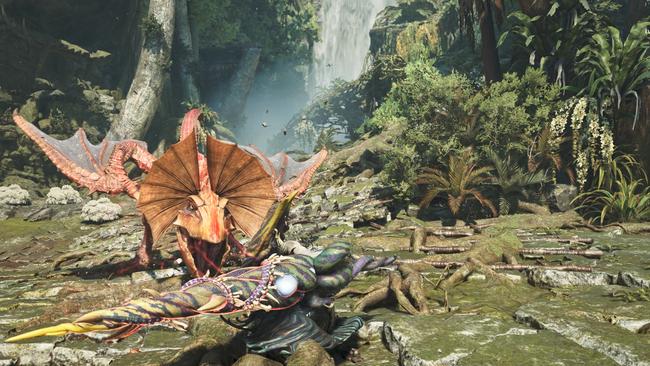
Monster Hunter Wilds is a game that wants to sell the idea of a living, breathing world. Even when you're not engaging with it directly, things are constantly changing regardless of your input. The weather shifts with the seasons, monsters arrive and depart, and the various villages across the game world react accordingly. The density and the scope of these environments dwarf those that come before, even if the addition of the new Seikret mount might occasionally mute those feelings.
Starting at the basics, in Wilds players can determine what next to hunt a number of different ways. You can check your map, to see what monsters are currently spawned in the game's various regions, and to check how those same spawns will change over the course of the next hour or so. You can see what "season" each map is currently in, too; dangerous yet engaging Apex predators spawn during the explosive transition, Inclemency, between the seasons of Fallow and Plenty. Maybe the monster you wish to hunt will only spawn during one of these seasons; maybe the resources you wish to gather are more likely to be found during a specific timeframe, too.
When you find a monster on the map, you don't have to immediately seek them out. From the map screen you can highlight a monster to either set as the target for a quest, or to save as an investigation for later. Even if you've just missed a monster spawn, they'll be recorded in your field survey history for a brief period, allowing you to spend a modest amount of Hunter Points in order to save that monster as an investigation for later. Realized that a certain monster you hunted would've been great to tackle with some friends? You can also do the same for monsters you have already hunted, and retroactively mark them for a later hunt. Especially at endgame, picking out which monsters to hunt with your friends is a leisurely affair, letting you truly tackle the game at your own pace.
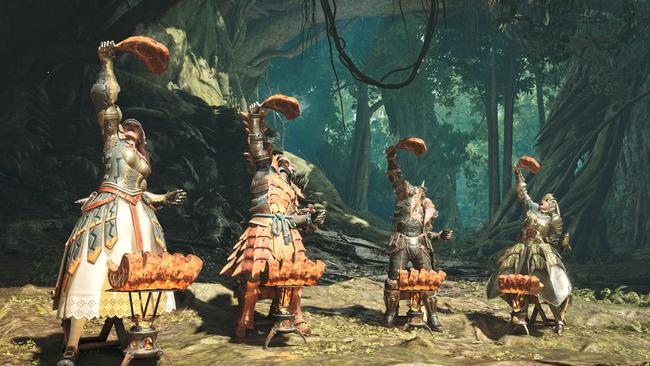
That being said, there's a disconnect here in how Monster Hunter Wilds wants you to play the game once you're finished with the story, and how things are rather railroaded for you until you've finished the narrative. The same was true of Monster Hunter World, and a core complaint of that game was that it was a frustrating experience to be able to experience the story with your friends; you'd all have to hop into a quest separately to see the cutscenes, hop out, and only then were you able to join up once everyone was on the same page.
On one hand, Monster Hunter Wilds' story is greatly improved. The presentation is much stronger, and you can tell that the team went to great lengths to try and recapture what made Monster Hunter 4's story land with the playerbase compared to the other attempts since. In many ways, Monster Hunter Wilds feels like a direct sequel to 4. Gemma, the Blacksmith, is heavily implied to be Little Miss Forge from that game's own story. Following up on the Ace Cadet's return as Aiden in Monster Hunter World, the Ace Lancer also returns alongside a newly confirmed name.
In a vacuum, there's a lot to like about Wilds' story. In many ways it's a genuinely impressive upgrade from Monster Hunter World's attempt. The cutscenes are much improved, and seamlessly transition into gameplay - setpieces feel like they have much more weight, as a result. Much like Monster Hunter 4, the Hunter has a full traveling party, and even in some story hunts directly collaborates with another hunter of the expedition, Olivia. The hunter themselves is now given the agency to consult with the characters around them as the story progresses. If you were only ever planning on tackling the story on your own, you'll be happy to hear that it actively feels like a proper story this time around, rather than the messy presentation that plagued World. While it's not quite at the depth of something like The Witcher, a genuine attempt was made to make Wilds' story feel like a proper RPG romp. In a similar vein, Arkveld - Wilds' flagship monster - is an everpresent constant in the game's story.

The core of the issue is how the story shines a spotlight on the disconnect that now faces Monster Hunter as a franchise. In previous entries, the singleplayer and multiplayer were two separate aspects of the experience of playing Monster Hunter; the singleplayer has more or less always been an extended tutorial, much as you might describe Wilds' story in derogatory terminology if you wished. The problem is that, much like World, the story has continued to be an active deterrent from being able to play through the game organically with your friends by being the only progression through the game's content.
The best way to describe the situation is that nothing has meaningfully changed. It might even be more difficult to do so, with the labyrinth of different options for how to engage with simple multiplayer, and what a Link Party, an Environmental Link, and a Lobby all actually mean in context. I can forgive some of the confusion since Monster Hunter Wilds is crossplay - and things are considerably more streamlined when you're inviting a friend on the same system that you're playing on - but there's a base level of friction to the multiplayer experience that only gets exacerbated whenever the story gets involved.
Put as bluntly as possible; I can only hope that the singleplayer story and multiplayer progression can once again be separated going forward. The one-two punch of World and now Wilds has definitively proven that the separation is a net positive to the experience of trying to play Monster Hunter. Monster Hunter Rise had the right idea by letting completion of the singleplayer optionally fast track players to higher quest difficulties in the multiplayer hub. While I enjoyed the story of Monster Hunter Wilds, the development team should not be designing their stories in such a way that directly and negatively impacts the multiplayer that has been part of the series' identity since the beginning.
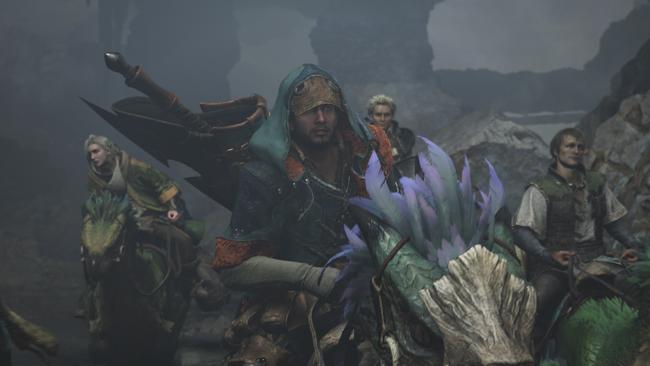
Divorced from this one glaring flaw, Monster Hunter Wilds is still a strong and promising evolution of the Monster Hunter formula - yet the paradigm shift that has occurred isn't without its quirks. Owing perhaps to how many more monsters can spawn on any given map at once, when targeting a monster for a hunt with your Seikret, they will automatically pilot you to its location. This streamlines the act of the hunt by a significant margin, and does somewhat diminish the amount of time that a player will spend exploring and memorizing the locations they're hunting in. Also owing to the large number of monsters in each location, and the constant shift of the weather and how this impacts the NPCs in villages that are now part of each maps' topography - the game's performance is rather demanding.
To be clear, this isn't actually anything new for the series. Monster Hunter World itself was very demanding on both consoles and PCs of the time, and that's no different with Monster Hunter Wilds. This does mean, however, that if you want a solid 60 FPS on PC you're going to have to have a top-end AMD processor - most likely a Ryzen 7 9800x3D - at a minimum. As I reported from my preview of the PlayStation 5 version, for whatever reason CPU performance seems to scale better to consoles. You can get Monster Hunter Wilds running well if you throw enough PC hardware at it, but although my desktop with the above-mentioned CPU and an RTX 5090 could manage max settings at native 4K60 before frame generation, lower end hardware will likely have to rely on those frame smoothing techniques to guarantee a higher perceived framerate. Whether this is or is not a dealbreaker will come down to your own individual preference.
As far as I can tell, these two elements come hand-in-hand. The Seikret guiding you directly is perhaps necessary because of the sheer number of monsters that can show up on a screen at any given time - and while you can turn off the auto-movement in the settings, it was probably the correct choice given the circumstances to enable it by default. Similarly, it's no surprise that the game's performance would be bottlenecked by the CPU in many configurations considering just how much the game is keeping track of in the background at any given time.
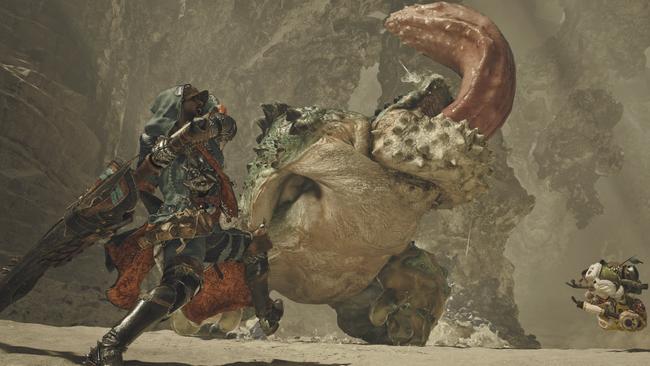
Like I said, how this will impact you will depend on personal preference. What's more consistently positive are the changes to the battle system, and the new additions that weapons have received. My beloved Gunlance is in one of the best states it's ever seen for the base release of a Monster Hunter, perhaps ever. Much of this owes to the Focus system, which itself seems to be a retooling of the ideas that lead to the Tenderize mechanic introduced in Monster Hunter World: Iceborne. As you deal damage to a monster, you'll leave Wounds on their body parts. Attacking these wounds will have your attacks dealing extra damage - and by holding down the left trigger you'll be able to more specifically target those Wounds with your attacks.
Unlike with Tenderize, Wounds are afflicted to a monster naturally over the course of a hunt. Even if you opt to use a weapon's new move directly attached to Focus Mode, it exists seamlessly as part of the hunt rather than breaking up its pacing. While there's certainly an argument that some Focus Strikes are perhaps too overpowered, and may even trivialize certain weapon mechanics - especially weapons such as Longsword or Insect Glaive - this feels more like a problem that only exists because as of right now, even at endgame, there aren't really any challenges that would stress players already used to endgame Master Rank hunts in Monster Hunter Rise: Sunbreak or Monster Hunter World: Iceborne.
Speaking of endgame, we're a bit limited in what we can share. Much like with Monster Hunter World, the endgame revolves around hunting Tempered Monsters - though alongside the return of Gore Magala, Frenzied Monsters have also rejoined the roster. Higher difficulty Tempered Monsters not only drop rarer and more useful decorations much like they did in World, but they also drop materials that can be used to craft endgame Artian Weapons, that can then be further strengthened to better suit your playstyle. While the number of monsters available in Wilds at launch isn't quite as high as in World, the variety is considerably improved, with monsters representing nearly every type of monster from the series' history. While it's hard to say for sure, the endgame loop does feel better than how things were for Monster Hunter World at its launch.
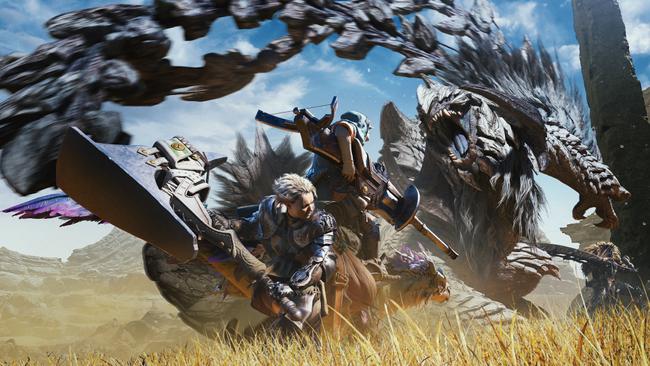
Monster Hunter Wilds is a major step forward for the series, but I can't say that step has been entirely steady; even if the foundation is there for the game to grow into one of the series' best. When I'm in the groove, gathering rare ingredients for meals by bartering in towns and tackling hunts with multiple monsters in them for a ton of decorations, it's easy to see how I can sink as much time into Wilds as I ended up doing for World. However, I can't say it's quite at the state where I think that will happen just yet. As cool as it is to see a living, breathing world - whether its with some notable omissions considering what monsters are already present in the game's roster, the lack of any means to showcase endemic life you've captured, or any number of nitpicks; it feels like Wilds is already setting the stage for its expansion to complete it, in a way that no other Monster Hunter has really felt up until now.
Monster Hunter Wilds may very well end up the best game in the franchise once all is said and done, and I definitely hope that ends up being the case. For now, however, Monster Hunter Wilds is merely a solid entry in the series that will only grow better over time. Exactly how far it will grow is anyone's guess; but I wouldn't dream of discounting how Capcom can take the game from here.